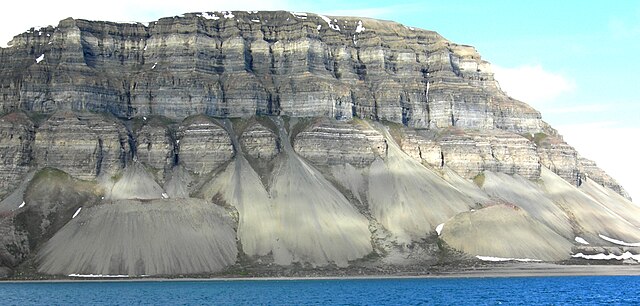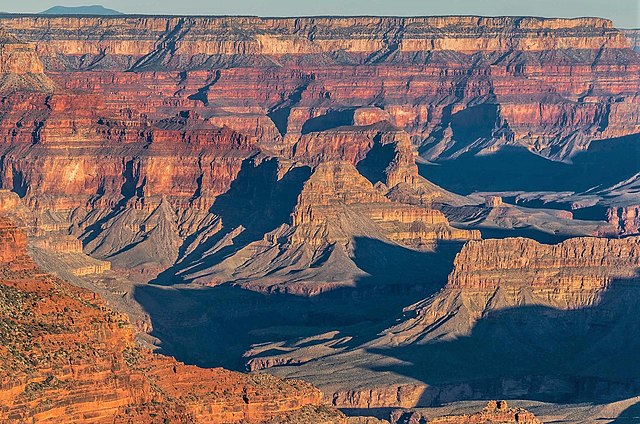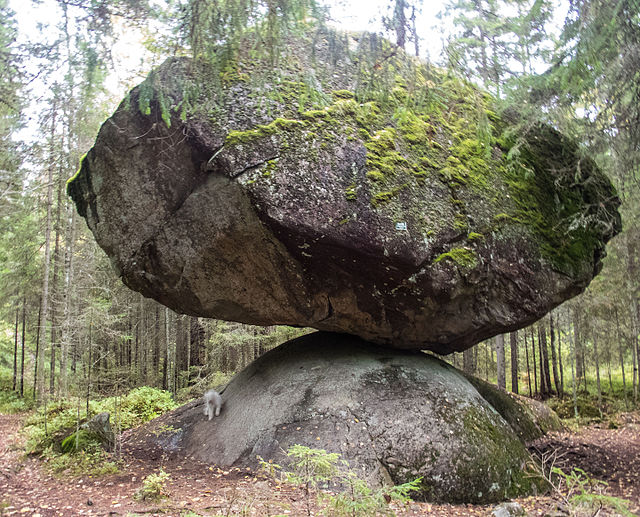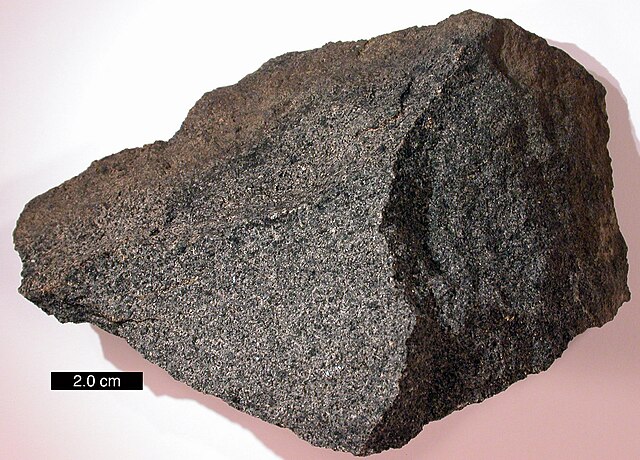Mass wasting, also known as mass movement, is a general term for the movement of rock or soil down slopes under the force of gravity. It differs from other processes of erosion in that the debris transported by mass wasting is not entrained in a moving medium, such as water, wind, or ice. Types of mass wasting include creep, solifluction, rockfalls, debris flows, and landslides, each with its own characteristic features, and taking place over timescales from seconds to hundreds of years. Mass wasting occurs on both terrestrial and submarine slopes, and has been observed on Earth, Mars, Venus, Jupiter's moon Io, and on many other bodies in the Solar System.
Talus cones produced by mass moving, north shore of Isfjord, Svalbard, Norway
Mass wasting at Palo Duro Canyon, West Texas (2002)
A rockfall in Grand Canyon National Park
Curved tree trunks in an area of soil creep on Grand Mesa, Colorado, US
In geology, rock is any naturally occurring solid mass or aggregate of minerals or mineraloid matter. It is categorized by the minerals included, its chemical composition, and the way in which it is formed. Rocks form the Earth's outer solid layer, the crust, and most of its interior, except for the liquid outer core and pockets of magma in the asthenosphere. The study of rocks involves multiple subdisciplines of geology, including petrology and mineralogy. It may be limited to rocks found on Earth, or it may include planetary geology that studies the rocks of other celestial objects.
The Grand Canyon, an incision through layers of sedimentary rocks.
A balancing rock called Kummakivi (literally "strange stone")
Rock outcrop along a mountain creek near Orosí, Costa Rica.
Sample of igneous gabbro








